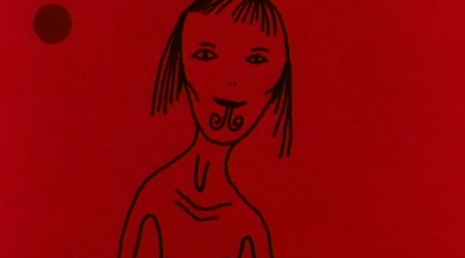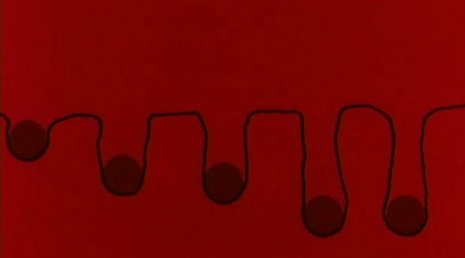Context & Sources
Gee whiz, so many influences! I began drawing as a child because we had books in the house by Charles Addams, Saul Steinberg and Edward Gorey. I still love them, especially Steinberg. When it comes to animation, I like the early work in the field - through the 1930s - in part because I enjoy the way they solved problems. My own films might have been made in the 1920s, for all the “sophisticated techniques” they employ. The Fleischer cartoons are so innovative, so funny and sweet-natured, I watch them over and over. For bouncy verve, they are only matched by Fischinger's abstract Studies series. The pure joy of movement that we see in Fischinger reminds me of Betty Boop. Those drops of pure light that swim around might have shaken themselves loose from Betty's hips. I love Oskar Fischinger for his naïve single-mindedness, and the goofy warmth that radiates from those glorious abstract animations.
If I had to pick a filmmaker who’s influenced me most, it would have to be Robert Breer; the medium of animation broke open aesthetically for me when I saw his tough and rigorous, but also touching and humane films. On a more personal level the collage animator Lewis Klahr has influenced me tremendously and, at one critical point, nudged me in the right direction, after some flailing on my part.
More recently I’ve discovered a couple of animators who fascinate me: One, Naoyuki Tsuji, makes strange, troubling, hard-to-follow narratives in smudged charcoal; the other, Karen Yasinsky, makes chilly, very funny psychodramas with GI Joe-like puppets. I like these films in part because I can't understand them. These two mysterious filmmakers fill me with admiration and awe.
I said that? I guess it's true. Some of my films are based on obscure facts, or obscure sources, some particular subject that fascinates me. It's enough to let viewers know the film is about something specific, perhaps beyond their knowledge, and let them sort it out as best they can. If I were more explicit the film would turn into a kind of educational film, not quite what I am after.
Harmony would be the best example of that. A bunch of facts come along, and the viewer gets stuck in a position of trying to synthesize them.
I have tons and tons of folders. "Philippines Headhunting." "Spider Wasps." "The Prehistoric Overkill." "Dragonfly Wings."
I like that my films reflect my knowledge of a certain subject and, at the same time, convey my limited understanding and confusion. I don't have all the answers. Fascinations are personality quirks, essentially. A few years ago I got very interested in prehistoric Peruvian pottery; this turned into my film The Presentation Theme, which addresses the mysterious iconography of the prehistoric Moche culture. For me, Moche art is like a comic strip where someone has removed all the dialog balloons. The living Moche must have known the story well and understood it, but today all we're left with is a string of sinister details.




